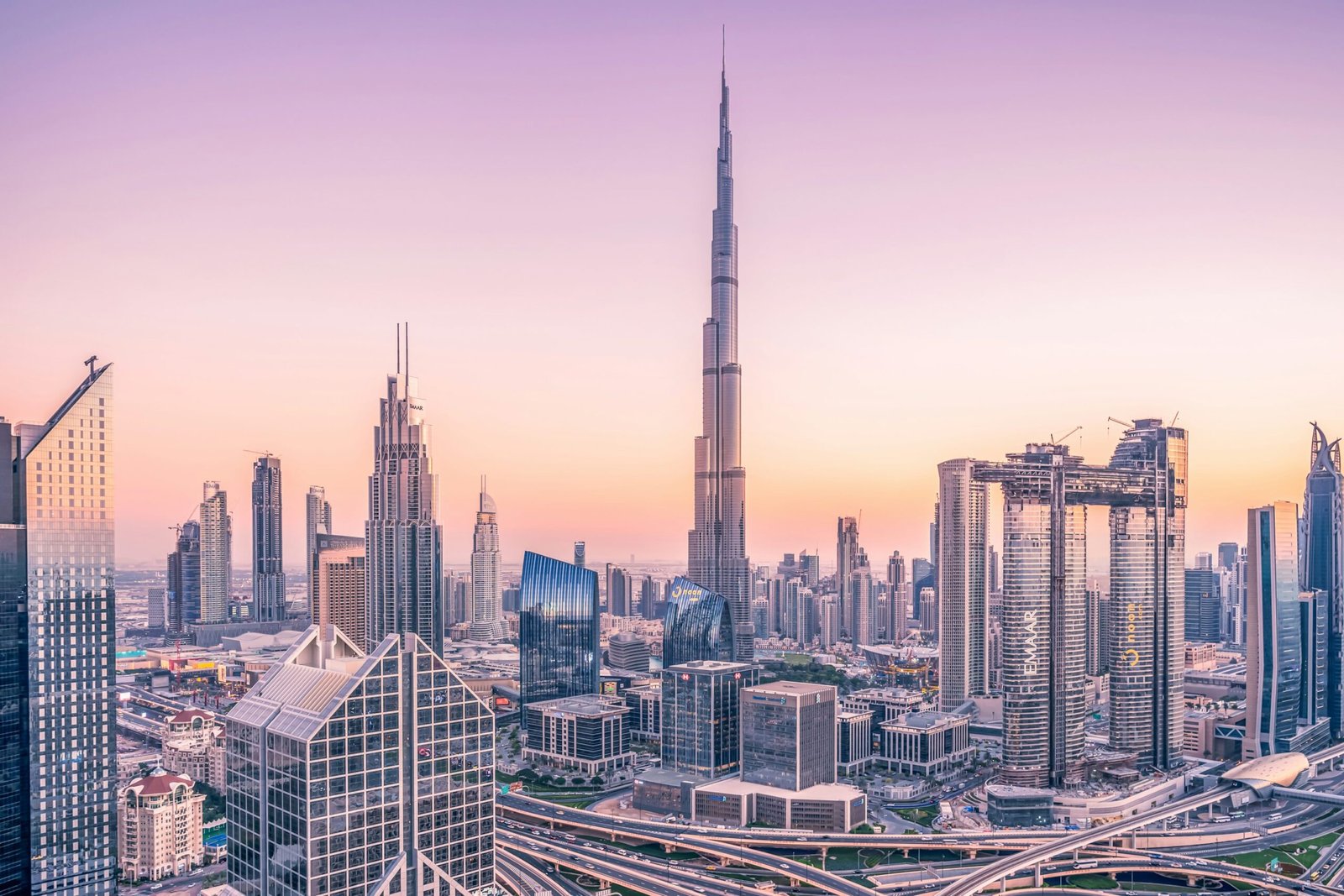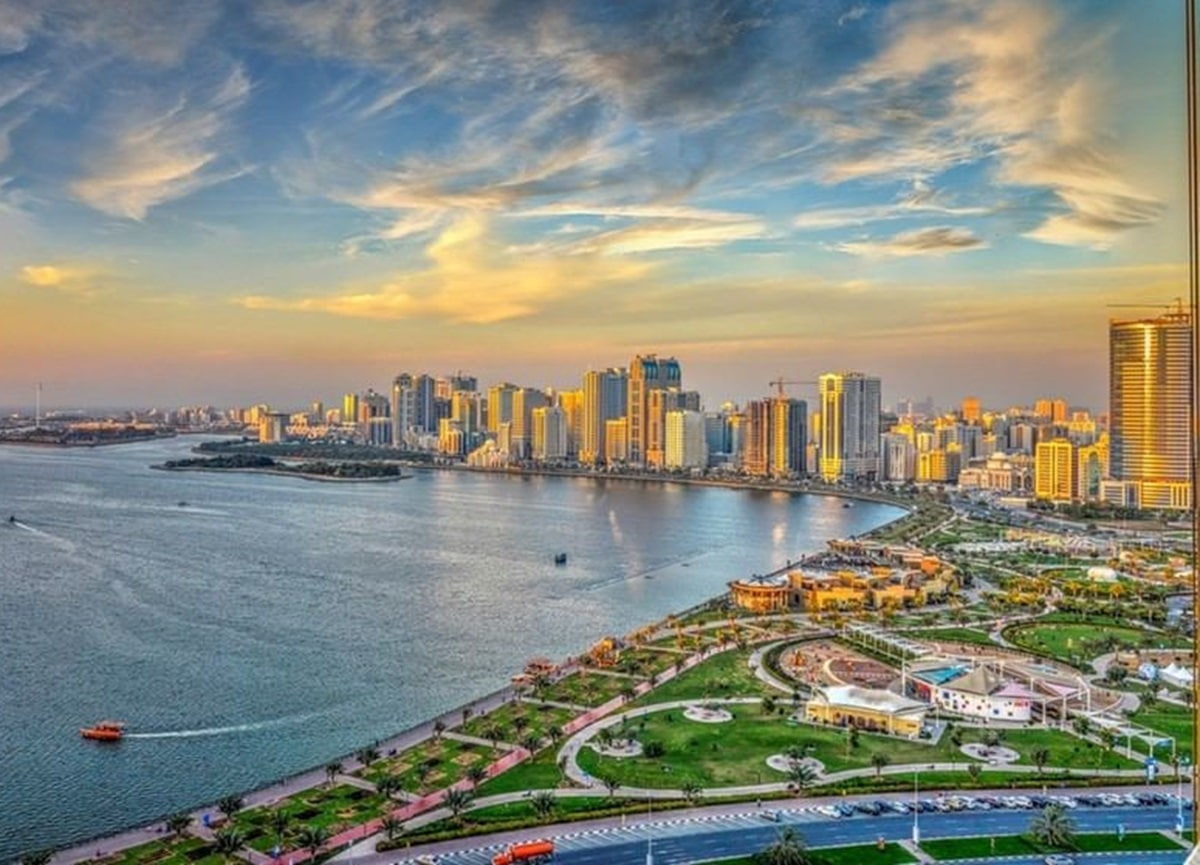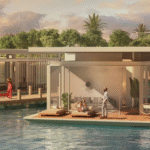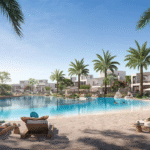Now Reading: Comparative Analysis: Real Estate Investment in Abu Dhabi, Ajman, and Sharjah in 2025
-
01
Comparative Analysis: Real Estate Investment in Abu Dhabi, Ajman, and Sharjah in 2025
Comparative Analysis: Real Estate Investment in Abu Dhabi, Ajman, and Sharjah in 2025

Table of Contents
The UAE’s real estate market in 2025 offers diverse investment opportunities across its emirates, with Abu Dhabi, Ajman, and Sharjah each presenting unique advantages for investors. Abu Dhabi’s luxury developments like Al Fahid Island, Ajman’s affordability, and Sharjah’s balanced market cater to different investor profiles. This comparative analysis evaluates these emirates based on market performance, regulatory environment, taxation, sustainability, ROI potential, and risk factors, providing insights to guide investment decisions in 2025.
1. Market Performance and Trends

Abu Dhabi
- Overview: Abu Dhabi’s real estate market is robust, driven by economic diversification and Vision 2030. In 2024, real estate transactions reached AED 96 billion, a 24% increase from 2023, with a 125% surge in foreign direct investment (FDI) to AED 7.86 billion. Prime office occupancy hit 95%, and residential prices rose 5-7%.
- Key Developments: Al Fahid Island, a AED 26 billion mixed-use project, offers 4,000+ luxury residences and commercial spaces with 11 km of coastal frontage. Other hubs include Al Maryah Island, Yas Island, and Saadiyat Island.
- Trends:
- Luxury Focus: High-end properties like Al Fahid Island’s Signature Collection villas (AED 2.5 million+) target high-net-worth individuals (HNWIs).
- Sustainability: Estidama Pearl Rating and LEED Platinum certifications (e.g., Al Fahid Island) drive demand for eco-friendly properties.
- Tourism and Culture: Proximity to landmarks like Louvre Abu Dhabi boosts residential and commercial appeal.
- Market Drivers: 3.8% GDP growth in 2024, projected 4.7% UAE GDP growth in 2025, and events like Expo 2025 fuel demand.
Ajman
- Overview: Ajman’s real estate market is smaller but growing rapidly, with transactions up 30% in 2024 (AED 9.2 billion). Its affordability and proximity to Dubai make it a budget-friendly alternative, with apartment prices starting at AED 500,000.
- Key Developments: Al Zorah, a freehold waterfront community, and Ajman Uptown offer villas and apartments with resort-style amenities.
- Trends:
- Affordable Housing: Low-cost properties (e.g., AED 500,000-800,000 apartments) attract middle-income buyers and investors.
- Emerging Freehold Zones: Al Zorah allows 100% foreign ownership, though freehold areas are limited compared to Abu Dhabi.
- Rental Demand: High demand from Dubai commuters drives 7-9% rental yields.
- Market Drivers: Population growth (2.5% in 2024), industrial expansion in Ajman Free Zone, and proximity to Dubai (30-minute drive).
Sharjah
- Overview: Sharjah’s market saw AED 27.8 billion in transactions in 2024, up 15% from 2023, driven by affordability and cultural appeal. Apartment prices range from AED 800,000-1.5 million, with 6-8% rental yields.
- Key Developments: Aljada, a AED 24 billion mixed-use project, and Tilal City offer freehold properties with modern amenities.
- Trends:
- Balanced Market: Offers affordable luxury compared to Abu Dhabi, with a focus on family-friendly communities.
- Cultural Hub: Sharjah’s UNESCO World Heritage status and cultural institutions attract expatriates and investors.
- Sustainability: Emerging green initiatives, though less stringent than Abu Dhabi’s Estidama standards.
- Market Drivers: 3% population growth in 2024, economic diversification in manufacturing and education, and proximity to Dubai.
Comparison:
- Abu Dhabi leads in luxury and market maturity, with higher price points (AED 2 million+ for Al Fahid Island properties) and stable growth.
- Ajman excels in affordability, with the lowest entry prices (AED 500,000+) but limited freehold zones and liquidity.
- Sharjah offers a middle ground, with prices 20-30% lower than Abu Dhabi (AED 800,000-1.5 million) and broader freehold options than Ajman.
2. Regulatory Environment
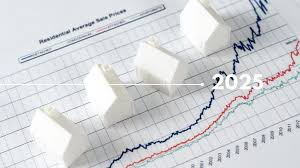
Abu Dhabi
- Foreign Ownership: Law No. 13 of 2019 allows 100% foreign ownership in freehold zones (e.g., Al Fahid Island, Al Maryah Island). The Abu Dhabi Global Market (ADGM) provides UK-modeled legal protections for Al Maryah and Al Reem Islands.
- Golden Visa: AED 2 million+ investments qualify for a 10-year residency visa, ideal for Al Fahid Island’s high-value properties.
- Transparency: The Abu Dhabi Real Estate Centre (ADREC) offers the Rental Index and blockchain-based transactions, enhancing pricing clarity and security.
- Sustainability: Estidama Pearl Rating is mandatory, with Al Fahid Island achieving LEED Platinum pre-certification.
Ajman
- Foreign Ownership: Limited freehold zones (e.g., Al Zorah) allow 100% foreign ownership, but most areas require local sponsorship for non-freehold properties.
- Golden Visa: Available for AED 2 million+ investments, achievable with larger properties but less common due to lower price points.
- Transparency: Ajman Real Estate Regulatory Agency (ARRA) provides basic digital platforms, but less advanced than ADREC or Dubai’s RERA.
- Sustainability: Emerging green initiatives, but no mandatory standards like Abu Dhabi’s Estidama.
Sharjah

- Foreign Ownership: Freehold zones like Aljada and Tilal City allow 100% foreign ownership, though less widespread than Abu Dhabi.
- Golden Visa: AED 2 million+ investments qualify, more accessible than Abu Dhabi due to lower property prices.
- Transparency: Sharjah Real Estate Registration Department offers digital tools, but lags behind Abu Dhabi’s blockchain and VR platforms.
- Sustainability: Green building incentives exist, but compliance is voluntary compared to Abu Dhabi’s mandatory standards.
Comparison:
- Abu Dhabi has the most advanced regulatory framework, with broad freehold zones, ADGM protections, and stringent sustainability mandates.
- Ajman has simpler regulations but limited freehold areas, reducing accessibility for foreign investors.
- Sharjah balances freehold availability with affordability, though its regulatory infrastructure is less developed than Abu Dhabi’s.
3. Taxation and Fees
Federal Taxes (Uniform Across Emirates)
- No Property Tax: No annual tax on residential or commercial properties, maximizing ROI.
- No Capital Gains Tax: Full retention of sale profits.
- Corporate Tax (9%): Applies to profits above AED 375,000 for business-managed properties; personal ownership exempt.
- VAT (5%): Applies to commercial leases/sales; residential leases exempt (except serviced apartments).
Emirate-Specific Fees
- Abu Dhabi:
- Transfer Fees: 1-2% of sale value (e.g., AED 50,000-100,000 on AED 5 million property).
- Registration Fees: AED 250 (title deeds).
- White Land Tax: 1-4% on vacant commercial/investment land, pending implementation (e.g., AED 10,000-40,000 per AED 1 million).
- Municipal Service Fees: 5% of rental value (e.g., AED 10,000 on AED 200,000 rent).
- Unique Risk: White land tax could impact investors holding undeveloped plots near Al Fahid Island.
- Ajman:
- Transfer Fees: 1-2% of sale value (e.g., AED 5,000-10,000 on AED 500,000 property).
- Registration Fees: AED 200-500.
- Service Fees: AED 3-5 per square foot, lower than Abu Dhabi.
- Unique Advantage: No white land tax, reducing costs for land investors.
- Sharjah:
- Transfer Fees: 2% of sale value (1% buyer, 1% seller; e.g., AED 16,000 on AED 800,000 property).
- Registration Fees: AED 500-1,000.
- Service Fees: AED 5-8 per square foot, similar to Ajman but lower than Abu Dhabi.
- Unique Feature: Split transfer fee structure balances costs between buyer and seller.
Comparison:
- Abu Dhabi has competitive fees (1-2% transfer) but faces white land tax risk, unlike Ajman and Sharjah.
- Ajman offers the lowest fees and no white land tax, ideal for cost-sensitive investors.
- Sharjah’s 2% transfer fee is higher than Ajman but lower than Dubai’s 4%, with a unique buyer-seller split.
4. Sustainability
Abu Dhabi
- Standards: Estidama Pearl Rating is mandatory, with Al Fahid Island achieving LEED Platinum pre-certification and Fitwel 3-Star Rating. Features include solar panels, water recycling, and 940,000 square meters of green spaces.
- Incentives: Tax breaks and subsidies for developers meeting sustainability or affordable housing quotas.
- Implications: Reduces utility costs by 15-20%, enhances tenant appeal, and boosts resale value.
Ajman
- Standards: Voluntary green initiatives, with projects like Al Zorah incorporating solar power and eco-friendly designs, but no mandatory certifications.
- Incentives: Limited subsidies for green development, less robust than Abu Dhabi.
- Implications: Lower upfront costs but higher long-term operational expenses compared to Abu Dhabi.
Sharjah
- Standards: Emerging green building codes, with projects like Aljada adopting energy-efficient designs, but compliance is voluntary.
- Incentives: Modest incentives for sustainable projects, less comprehensive than Abu Dhabi’s.
- Implications: Balances affordability with moderate sustainability benefits, trailing Abu Dhabi’s standards.
Comparison:
- Abu Dhabi leads with mandatory, high-standard sustainability certifications, ideal for eco-conscious investors.
- Ajman lags in mandatory standards, reducing upfront costs but limiting long-term savings.
- Sharjah offers a middle ground, with growing sustainability but less rigorous requirements than Abu Dhabi.
5. ROI and Yield Potential
Abu Dhabi
- Residential: 6-10% yields (e.g., Al Fahid Island’s Al Marsa Villas, AED 2.5 million+, yield 8-10%).
- Commercial: 5-8% yields (e.g., Al Fahid Island’s marina retail spaces).
- Capital Appreciation: 5-7% annually, driven by limited supply and high demand in freehold zones.
- Key Driver: Luxury appeal and cultural landmarks (e.g., Louvre Abu Dhabi) ensure stable growth.
Ajman
- Residential: 7-9% yields (e.g., Al Zorah apartments, AED 500,000-800,000, yield 8%).
- Commercial: 6-8% yields in Ajman Free Zone.
- Capital Appreciation: 10-15% annually, fueled by affordability and Dubai proximity.
- Key Driver: Low entry prices and commuter demand boost rental income.
Sharjah
- Residential: 6-8% yields (e.g., Aljada apartments, AED 800,000-1.5 million, yield 7%).
- Commercial: 5-7% yields in areas like Al Nahda.
- Capital Appreciation: 8-12% annually, driven by cultural appeal and affordability.
- Key Driver: Family-oriented communities and industrial growth sustain demand.
Comparison:
- Abu Dhabi offers stable, high-end yields (6-10%) with strong appreciation, ideal for HNWIs.
- Ajman provides the highest yields (7-9%) and appreciation (10-15%) due to affordability, but lower liquidity.
- Sharjah balances yields (6-8%) and appreciation (8-12%), appealing to mid-income investors.
6. Risk Factors
Abu Dhabi
- Risks:
- White Land Tax: Pending 1-4% tax on vacant land could increase holding costs for undeveloped plots near Al Fahid Island.
- High Entry Costs: Prices (AED 2 million+) limit accessibility compared to Ajman/Sharjah.
- Competition: Rising FDI increases price pressure in premium zones.
- Mitigation: Develop land promptly, invest in off-plan projects like Al Fahid Island, and use professional guidance to navigate regulations.
Ajman
- Risks:
- Limited Freehold: Restricted freehold zones reduce options for foreign investors.
- Liquidity: Smaller market size limits resale potential compared to Abu Dhabi.
- Infrastructure: Less developed than Abu Dhabi, potentially impacting tenant appeal.
- Mitigation: Focus on freehold areas like Al Zorah, target rental income over resale, and monitor infrastructure developments.
Sharjah
- Risks:
- Moderate Liquidity: Less liquid than Abu Dhabi but more than Ajman.
- Regulatory Complexity: Split transfer fees and limited freehold zones require careful navigation.
- Slower Growth: Less aggressive price appreciation than RAK or Ajman.
- Mitigation: Invest in established projects like Aljada, clarify fee structures with agents, and target family-oriented tenants.
Investment Recommendations
- Abu Dhabi:
- Best For: HNWIs seeking luxury and stability.
- Strategy: Invest in Al Fahid Island’s off-plan villas or retail spaces for 8-10% ROI. Leverage Golden Visa (AED 2 million+), prioritize LEED-certified properties, and monitor white land tax updates.
- Example: Al Marsa Villas (AED 2.5 million+, 8% yield, 5-7% appreciation).
- Ajman:
- Best For: Budget-conscious investors seeking high yields.
- Strategy: Target Al Zorah apartments (AED 500,000-800,000, 7-9% yields) for rental income. Focus on freehold zones and capitalize on Dubai commuter demand.
- Example: Al Zorah studio (AED 500,000, 8% yield, 10-15% appreciation).
- Sharjah:
- Best For: Mid-income investors seeking affordability and cultural appeal.
- Strategy: Invest in Aljada’s mixed-use properties (AED 800,000-1.5 million, 6-8% yields) for balanced returns. Use digital platforms for transparency and target family tenants.
- Example: Aljada apartment (AED 1 million, 7% yield, 8-12% appreciation).
- General Tips:
- Tax Optimization: Hold residential properties personally to avoid corporate tax; ensure VAT compliance for commercial investments.
- Professional Guidance: Engage firms like Metropolitan Capital Real Estate (Abu Dhabi), Imobiliare Dubai (Ajman/Sharjah) for market insights and regulatory navigation.
- Diversification: Balance investments across emirates to hedge risks (e.g., Abu Dhabi for stability, Ajman for yields, Sharjah for affordability).
Conclusion
In 2025, Abu Dhabi, Ajman, and Sharjah offer distinct real estate investment opportunities. Abu Dhabi’s luxury market, exemplified by Al Fahid Island, delivers stable 6-10% yields and strong appreciation, ideal for HNWIs but with higher entry costs and white land tax risks. Ajman’s affordability and 7-9% yields attract budget investors, though limited freehold zones and liquidity pose challenges. Sharjah balances affordability and cultural appeal with 6-8% yields, offering a middle ground. By aligning with sustainability trends, optimizing tax strategies, and leveraging professional guidance, investors can capitalize on each emirate’s strengths to build resilient portfolios.
WATCH MORE: https://www.youtube.com/watch?v=O6mVAP6GOTc
READ MORE: Future-Proofing Real Estate Investments: Sustainability and Tax Efficiency in the UAE by 2025



